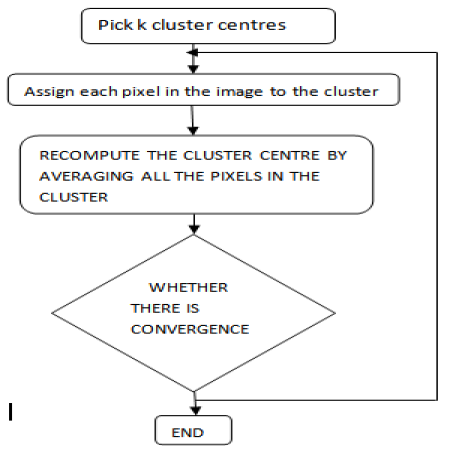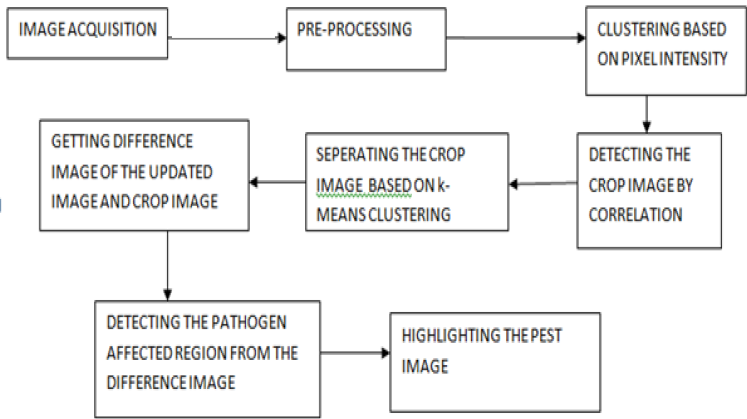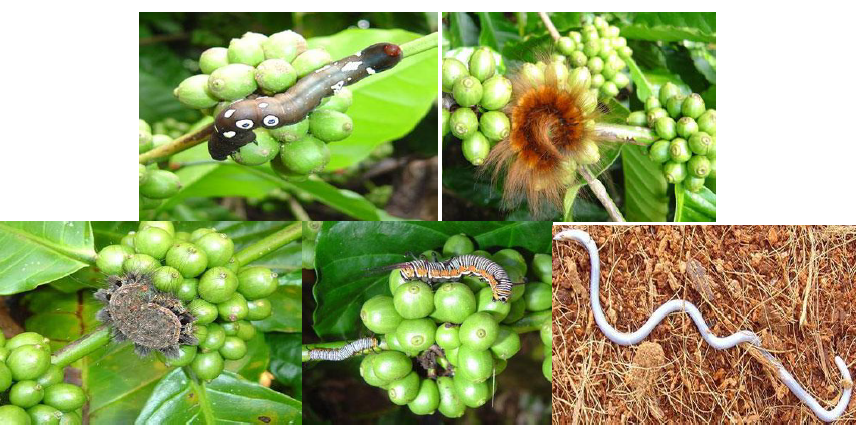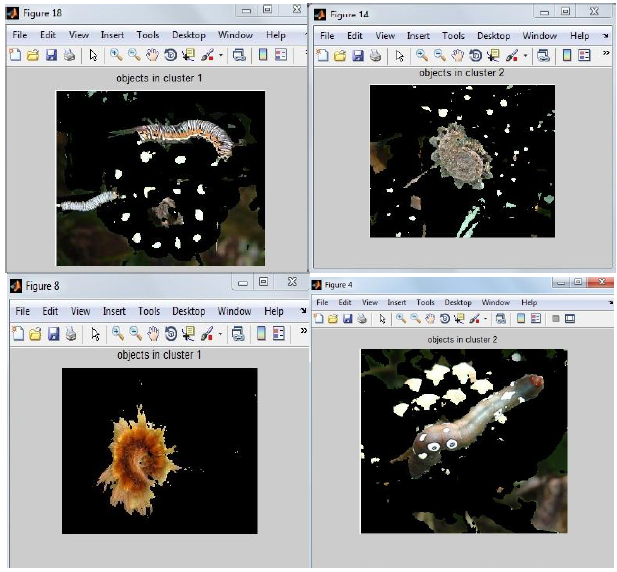ABSTRACT
Monocropped plantations are unique to India and a handful of countries throughout the globe. Essentially, the FOREST approach of growing coffee along with in India has enabled the plantation to fight many outbreaks of pests and diseases. Mono cropped Plantations are under constant threat of pest and disease incidence because it favours the build up of pest population.
To cope with these problems, an automatic pest detection algorithm using image processing techniques in MATLAB has been proposed in this paper. Image acquisition devices are used to acquire images of plantations at regular intervals. These images are then subjected to pre-processing, transformation and clustering.
IMAGE SEGMENTATION

Fig1.Flow chart for clustering Algorithm.
This is an iterative technique that is used to partition an image into clusters. Procedure of clustering method is explained in figure 1. Clusters can be selected manually, randomly, or based on some conditions. Distance between the pixel and cluster centre is calculated by the squared or absolute difference between a pixel and a cluster centre.
Clusters can be selected manually, randomly, or based on some conditions. Distance between the pixel and cluster centre is calculated by the squared or absolute difference between a pixel and a cluster centre. The difference is typically based on pixel colour, intensity, texture, and location, or a weighted combination of these factors.
PROPOSED METHOD

Fig.2.block diagram for the proposed method.
The segmentation algorithm alone cannot provide good quality output, it needs pre-processing step. Pre-processing may consist of various steps like de-noising and image enhancement. De-noising provided with the rank filter, which well suited for the pest image. It is non-linear filter, which preserve the shape, edge and other information without lack of clarity (Krit somkanth, 2011), (R M Hodgson 1985). Due to the irregularities and drawbacks in pest images, it is mandatory to include the pre-processing step before the segmentation process for the quality and accurate output. The proposed method is shown in figure 2.
EXPERIMENTAL RESULTS AND DISCUSSION

Fig3. Selection of coffee plantations affected with pests.
The figure 3 shows the ROI selection of a infarction region. This selection helps to analyse the needed region alone. In this method, the pixels inside the rectangular mask alone are taken and the remaining pixels are left. It done by regularly capturing the field Images.
Masking means setting the pixel value in an image to zero or some other background value. In this step, we identify mostly the green coloured pixels. After that, based on specified threshold value that is computed for these pixels. The green components of the pixel intensities are set to zero if it is less than the pre-computed threshold value. Then red, green and blue components of this pixel is assigned zero value by mapping RGB components. The green coloured pixels mostly represent the healthy areas of the leaf and they do not add any valuable weight to disease identification.

Fig 6.final clustered image of the pest.
The final clustering called differential clustering is done by subtracting the clustered plant image from the acquired image. Thus from the difference image, we obtain the pest image as shown.
CONCLUSION
The use of Artificial insecticides and nematicides have been degrading the quality of plantation crops for many years. In this paper a novel algorithm is presented for easily identifying the pest infected areas of these crops. The algorithm can be further modified for finding the diseased areas in the crops by using sophisticated softwares and better image acquisition devices.
All over the world agriculture experts are working on eradication of bioagressors and infected coffee plantation are one of the challenges out of it. Image Processing technique plays a vital role in it. Our first objective is to detect diseases like coffee berry on plantations and other bioagressors (aphids) or plant diseases . Cognitive approach introduce new objects to detect or new image processing programs to extract the corresponding information.
We propose an original approach for early detection of the of pest on crops. To detect biological objects on a complex background, we combined scanner image acquisition, sampling optimization, and advanced cognitive vision. It illustrates the collaboration of complementary disciplines and techniques, which led to an automated, robust and versatile system. The prototype system proved reliable for rapid detection of pests. It is rather simple to use and exhibits the same performance level as a classical manual approach. Our goal is rather to better spot the starting points of bioagressors attacks and to count these so that necessary action can be taken.
Source: IOSR Journal of Electronics and Communication Engineering
Authors: Murali Krishnan | Jabert.G
>> 200+ Matlab Projects based on Control System for Final Year Students
